We greatly hope that you, our readers, are enthralled and educated by the information contained within this article about these 7 North American Desert Dwellers. It was certainly a pleasure for us to compile that data for your perusal, and hopefully, edification.
Naturally, the species presented herein represent only the smallest part of the biological marvels found in the desert zones of this region. This listing, in fact, doesn’t even include any of the flora in these ecosystems. We invite you to check those out in our other articles.
Tiger Rattlesnake
Tiger Rattlesnake Facts
- Leading off this article about 7 North American Desert Dwellers comes the impressive, and deadly, reptile intriguingly named the Tiger Rattlesnake.
- This magnficent creation of Nature and evolution most frequently goes by its common name for multiple reasons. Professionals, however, more commonly refer to the creature by its formal, scientific name. That’s the term of Crotalus tigris.
- Perhaps the most noteworthy fact about the reptile remains the level of danger it represents. That holds true due to the fact that it represents the most dangerous of known varieties of rattlesnake. This level of danger occurs regardless of size.
- The quantity of venom injected also equals much less than that of similar species. Yet, its the nature of the toxin that makes it so perilous. That’s because the venom contains a powerful mix of neurotoxins and mycotoxins, often leading to muscle death.
- Unfortunately for it, though, the range of the species is restricted. Even within that range, its own nature serves as a limiting factor to its potential spread. That occurs due to the fact that its habitat requirements restrict its population to specific regions.
- Despite inhabiting such a restricted range, however, its numbers remain stable. The IUCN, therefore, lists the Tiger Rattlesnake as Least Concern on its Red List. Nevertheless, given the nature of its needs, it remains vulnerable to climate change.
Tiger Rattlesnake Physical Description
The Tiger Rattlesnake classifies as a type of pit viper. It also qualifies as a smaller than average one. Like many species of reptiles, though, it displays the trait of sexual dimorphism. In its case, the males typically attain a slightly larger size than that of the females.
Neither gender attains an impressive physical size, however. Lengths vary significantly between individuals, though. Adults average between 18 – 36 in (46 – 92 cm) in length. The average length is about 24 in (61 cm). Weights also rarely exceed 1 lb ( 0.45 kg).
The most distinguishing physical feature of the Tiger Rattlesnake is the head. This develops in a highly rectangular shape. It also forms quite small in proportion to body length. The rattle on its tail further develops relatively much larger than others, though.
Its basic coloring also varies greatly among individuals. Most present combinations of an orange-brown or bluish gray. Black bars also show across the body, thus the common name. Like all pit vipers, individuals also possess heat-sensing organs on each side of the head.
- Kingdom: Animalia
- Phylum: Chordata
- Class: Reptilia
- Order: Squamata
- Family: Viperidae
- Genus: Crotalus
- Species: C. tigris
Tiger Rattlesnake Distribution, Habitat, and Ecology
Regrettably, the astonishing Tiger Rattlesnake evolved as solely endemic to a moderately small region of the globe. It’s also a region well known for its abundance of natural marvels, though. That’s because it’s endemic to specific portions of the continent of North America.
More specifically, the tantalizing reptile appears only in the region of the state of Arizona, in the United States, and southern Mexico. Even more specifically, though, within that limited range, the snakes roam at altitudes ranging from sea level to 4,806 ft (1,465 m).
The small but powerful reptile further inhabits an environment considered extremely harsh for most species. That’s due to the fact that it usually inhabits regions of rocky desert canyons, bajadas, and foothills. This highly adapted species also remains mainly terrestrial.
Nevertheless, some individuals do occasionally diverge from this typical pattern of behavior. On occasional, some specimens choose to perch in low vegetation. Its periods of activity also vary somewhat, according to the seasons, having adapted to its environment.
Just as all other known snakes, it evolved as a carnivore. Given its size, individuals primarily prey on a variety of small mammals. Yet, it distinguishes itself in another manner. That’s because, unlike most snakes, it hunts by both ambush and active stalking equally.
Considering its level of lethality, its own predators remain few. But the few it does face includes hawks and eagles. By nature, the Tiger Rattlesnake can be easily annoyed and remains quite aggressive. The major threat it faces is human expansion into its territory.
Blue Death Feigning Beetle
Blue Death Feigning Beetle Facts
- Next up among our choices for inclusion in this listing of 7 North American Desert Dwellers we present the aptly-named Blue Death Feigning Beetle.
- The name this fabulous work of Nature and evolution most frequently goes by is one that’s perfectly descriptive. That commonly used name remains unique, to put it mildly. The intriguing term also serves as perfectly fitting, and informative, however.
- The attention-grabbing term certainly seems more poetic than its formal scientific one. That’s because it also bears the somewhat hard to pronounce name of Asbolus verrucosus. The first acknowledgement of it as a distinct species occurred in 1851.
- Yet sadly, scientists studying the invertebrate do not know much about this insect. This fact comes as something of a surprise, given recent developments. That holds true due to the fact that the species is rapidly becoming quite popular in the pet trade.
- The common name further derives from the combination of two factors. The first, obviously, stems from its color. The second, though, is the behavior of the species. When threatened, it reacts in a way the name implies, literally pretending to be dead.
- Thankfully, its numbers in the wild appear to be stable. Therefore, the IUCN does not have a listing of the species. It doubtless faces the same potential threats as many other species with similar habitats, though. These include habitat loss and climate change.
Blue Death Feigning Beetle Physical Description
Perhaps most notably, the remarkable Blue Death Feigning Beetle actually develops as black in color. A simple explanation clarifies the confusion over its coloring, however. That’s because the blue comes from a chemical coating that it secretes from its body at will.
Amazingly, such a rather interesting adaptation does serve a fully functional purpose, however. This coating serves to protect it from the harmful effects of sunlight. Given the heat and aridity of its native environment, this is a vital evolutionary trait.
This fascinating invertebrate also merits full attention and appreciation despite its sheer physical size. That’s true since, in actuality, this wonder of natural evolution developed as quite small in size. A total overall length averages between 0.7 – 0.8 in (18 – 21 mm).
The fascinating Blue Death Feigning Beetle also displays the physiological characteristic of sexual dimorphism. In its case, though, this trait only manifests to a very small degree. Males typically average about 0.5 mm smaller in size than the females of the remarkable species.
- Kingdom: Animalia
- Phylum: Arthropoda
- Class: Insecta
- Order: Coleoptera
- Family: Tenebrionidae
- Genus: Asbolus
- Species: A. verrucosus
Blue Death Feigning Beetle Distribution, Habitat, and Ecology
The truly remarkable Blue Death Feigning Beetle evolved as endemic to a region of the globe many might automatically think of as devoid of significant concentrations of life. That’s due to its apparently developing as native to the desert regions of North America.
Within that general region, however, it shows decided preferences in its choice of habitat range. The great majority of its population appears in the northwest section of the continental United States. Yet its own nature further restricts its zone of habitation.
In that portion of the continent, it shows definite preferences for its choice of habitat. Given the nature of its environment, this represents a vital necessity. As a result, the arthropod typically appears crawling either on or around the protective shelter of sand dunes.
Additionally, although it hunts by both day and night, the invertebrate remains primarily nocturnal. The fascinating creature also appears to mainly be an opportunistic feeder. As a result, it principally consumes a variety of plants, as well as any carrion available.
In conclusion, the remarkable Blue Death Feigning Beetle also appears to be extremely long-lived, at least compared to related species. That’s because it can live for as long as ten years. Unfortunately, this only serves to make it even more popular as an exotic pet.
Cougar
Cougar Facts
- The third entry into this compliation of 7 North American Desert Dwellers is the only feline on the list, the stunningly beautiful wildcat name the Cougar.
- The short term for the animal serves as but one of the common names assigned to this magnificent wild feline. It other common names include the mountain lion, puma, painter, panther, and catamount. The variety of names occur due to its wide range.
- Scientists, meanwhile, know the stunning feline by the term Puma concolor. Regardless of the name one uses for it, the animal remains one of the most recognizable of the smaller wild felines. It’s also the most widespread of any in its Hemisphere.
- The renowned Swedish zoologist, Carl Linnaeus, holds the credit for the first acknowledged scientific recognition and naming of the species. This achievement he accomplished in 1771. The name he chose, however, later changed several times.
- This breathtaking feline obviously evolved as a slender and agile member of the cat family. It also holds a unique distinction. That’s because, though not technically one of the so-called big cats, it’s the fourth largest of all known wild felines.
- Even though its population doesn’t compare to past numbers, this appears stable throughout its range. The IUCN, therefore, currently lists it as Least Concern. It does face several threats, including the ever-increasing danger posed by climate change.
Cougar Physical Description
Unlike some species, the breathtaking Cougar actually impresses us with its size, in addition to other factors. The animal also, however, displays the physiological characteristic of sexual dimorphism. In this, in fact, it mirrors virtually all know types of feline, wild and domestic.
In its specific case, though, this trait manifests in terms of size, with males of the species attaining slightly greater lengths and weights. Mature adults of both genders, however, vary greatly in height, averaging between 24 -35 in (60 – 90 cm) tall at the shoulders.
In terms of length, meanwhile, is where the size differences appear the most obvious. The males of this feline attain an average nose-to-tail length equaling roughly 7.9 ft (2.4 m). Females, however, generally reach an overall length of about 6.7 ft (2.05 m).
It bears pointing out, though, that of this total measurement, the tail itself comprises 25 – 37 in (63 – 95 cm) of this. The males, meanwhile, typically reach a weight of between 115 – 220 lb (53 – 100 kg). Females, on the other hand, average 64 – 141 lb (29 – 64 kg).
The Cougar also boasts other impressive statistics. Its rounded head displays erect ears. The feline has a jaw and forequarters powerful enough to grasp large prey. It also has five retractable claws on the forepaws, and proportionately the largest hindlegs in the cat family.
- Kingdom: Animalia
- Phylum: Chordata
- Class: Mammalia
- Order: Carnivora
- Family: Felidae
- Genus: Puma
- Species: P. concolor
Cougar Distribution, Habitat, and Ecology
Pleasantly surprisingly, the Cougar inhabits a comparatively large section of the globe. More precisely, it appears in a range that extends from parts of Canada to the Andes in South America. Its greatest concentration, however, remains concentrated in North America.
Aiding in its continued existence as a species is the fact that it evolved as a highly adaptable creature. This flexibility allows it to inhabit a wide variety of habitat types within its native range. Most notably, though, these include forests, lowlands, mountains, and arid climates.
Its incredible physique allows the impressive feline some of the greatest leaping and short-sprint ability of any animal. Individuals have the ability to jump as high as 18 ft (5.5 m) in one bound. These also evolved the capacity to leap as far as 40-45 ft (12-14 m) horizontally.
But Nature did not stop there. This animal also boasts some extremely impressive speeds. The top running velocity of the animal also ranges between 40-50 mph (64-80 kph). They remain, however, best capable of short, powerful sprints as opposed to long chases.
The remarkable Cougar also feeds entirely as a carnivore. As a supremely successful generalist predator, the mammal further feeds opportunistically. Specimens therefore eat any animal they can catch, from insects to large ungulates in excess of 1,100 lbs (500 kg).
Investigations in Yellowstone National Park showed that elk, followed by mule deer, were the animal’s primary targets. The mammal further evolved as adept at climbing, allowing it to evade canine competitors. Although not strongly associated with water, it does swim.
Leaping Lesbian Lizard
Leaping Lesbian Lizard Facts
- Appearing next within this compendium of 7 North American Desert Dwellers is the astonishing reptilian species named the Leaping Lesbian Lizard.
- Somewhat uniquely, the bizarre term perfectly serves as the commonly used name for a particular New Mexico Whiptail Lizard. What sets it apart, however, is the fact that it was produced through the inter-breeding of two distinct native species of lizard.
- Amazingly, this astonishing lizard resulted from the mixing of the Little Striped Whiptail and the Western Whiptail. The hybridization of these species produces sterile males, however. But, the resourcefulness of Nature did not stop there.
- That’s because the species achieved parthenogenesis, a type of asexual reproduction. This allows the resulting all-female population to reproduce. The unusual lizard, therefore, actually evolved into a separate species capable of reproduction.
- In fact, this combination of inter-species hybridization and parthenogenesis isn’t unique. It also exists in other species within the animal kingdom. That’s due to the fact that the process exists as a reproductive strategy in other species of whiptail lizard.
- The Leaping Lesbian Lizard also holds yet another distinction. This one, however, has nothing to do with any physical aspect of the creature. That’s because this phenomenal reptile currently represents the official state reptile of the state of New Mexico.
Leaping Lesbian Lizard Physical Description
Perhaps most notably, the amazing Leaping Lesbian Lizard, regardless of other attributes, constitutes a small-to-moderate sized lizard. That occurs due to the fact that the majority of individuals attain a total length measuring between 6.5 – 9.1 in (16.5 – 23 cm).
Quite obviously, sexual dimorphism does not appear in this species, as it does in many related creatures, though. Among most specimens, its natural coloring typically presents as an overall brown or black. However, seven pale yellow stripes also from head to tail.
Numerous light spots also often occur between the head-to-tail stripes. The majority of individuals also have a white or pale blue underside, with a blue or blue-green colored throat. The body of the Leaping Lesbian Lizard additionally develops a distinctive shape.
That construction appears as distinctly slender, while the tail of the awesome reptile grows comparatively long. In fact, this particular shape, in combination with its coloring pattern, further represents an evolutionary adaptation for camouflage in its native habitat.
- Kingdom: Animalia
- Phylum: Chordata
- Class: Reptilia
- Order: Squamata
- Family: Telidae
- Genus: Cnemidophorus
- Species: C. neomexicanus
Leaping Lesbian Lizard Behavior
Like most other whiptail lizards, the Leaping Lesbian Lizard also evolved as diurnal. It’s thus far more active in the daylight hours. It also evolved as entirely insectivorous in nature. It remains wary, energetic, and fast moving, frequently darting for cover if approached.
Its reproductive methods, however, clearly and distinctly separate the animal from most related types of lizards. When this reptile reproduces, the mother-to-be lays up to four unfertilized eggs. This action most commonly occurs in the mid-summer part of the year.
These precious few eggs laid then typically hatch approximately eight weeks later. Despite reproducing asexually, and being an all-female species, the Leaping Lesbian Lizard still engages in mating behavior with other females of its own species, as its name also implies.
Interestingly, a common theory among many researchers suggests a logical purpose for this. That theory proposes that this observed behavior helps to stimulate ovulation. This belief occur due to the observed fact that those who do not mate do not lay eggs.
Leaping Lesbian Lizard Distribution, Habitat, and Ecology
Not surprisingly, the fascinating Leaping Lesbian Lizard evolved as native to a particularly arid environment. This range likely comes as no surprise to some, though. That specific range includes the southern United States and also northern Mexico, in North America.
However, even within these two regions, the amazing Leaping Lesbian Lizard also has specific areas it chooses to inhabit. As a result, in the United States it only appears in New Mexico and Arizona. Meanwhile, in Mexico, the species only lives in the area of Chihuahua.
The New Mexico Whiptail Lizard, as it is also known, also lives in a rather wide variety of semi-arid habitats. These varied regions include grassland, rocky areas, shrubland, or mountainside woodlands, proving its adaptability. It’s truly a remarkable creation of Nature.
Bald Eagle
Bald Eagle Facts
- Appearing in the fourth spot on this listing on 7 North American Desert Dwellers, the breathtaking Bald Eagle does so only due to random selection.
- The unusual term serves as the common name for an incredibly majestic bird that technically classifies as a sea eagle. This proud and magnificent avian also goes by the very difficult to pronounce scientific name of the Haliaeetus leucocephalus.
- By either name, however, this animal currently remains the only known variety of sea eagle native to the its particular portion of the world. Modern science also currently recognizes two known subspecies of this incredible bird still in existence.
- Somewhat ironically, despite its now quite famous name, the breathtaking animal isn’t actually bald at all. This misconception occurs because the name derives from a much older term. That original term actually means white-headed.
- Most fortunately, the population of the stunning Bald Eagle appears to be both sufficient and stable. That condition also appears to hold true throughout the entirety of its natural range. This fortunate situation was not always the case, however.
- In the past, the breathtaking raptor nearly became extinct, before humans implemented protective measures. Thankfully, though, it now holds the status of Least Concern with the IUCN. The creature still faces the threat of climate change, however.
Bald Eagle Physical Description
Most notably, the gorgeous Bald Eagle displays the physiological characteristic of sexual dimorphism. That remains a characteristic shared by many of its related species, though. In its case, however, this trait presents itself as a matter of size.
That holds true due to the fact that the females of the species average about 25% larger than the males. These physically larger females further weigh as much as 14 lb (6.3 kg). In addition to this, exceptional females sometimes even attain a wingspan of 7.5 ft (2.3 m).
The plumage of the creature also continues to be one of its most striking features. This trait presents as a distinctive combination of dark brown on the body, and white on the head and tail. That combination has served to make it one of the most recognizable birds on earth.
The eyes, beak, and feet of the majestic Bald Eagle further show a bright yellow in color. The powerful talons also develop large and razor-sharp, as with most raptors. Not only that, the Bald Eagle possesses the ability to retract its talons at will, but rarely chooses to do so.
- Kingdom: Animalia
- Phylum: Chordata
- Class: Aves
- Order: Accipitriformes
- Family: Accipitridae
- Genus: Haliaetus
- Species: H. leucocephalus
Bald Eagle Distribution, Habitat, and Ecology
The range of the Bald Eagle remains extensive in nature. The beautiful creature inhabits most of North America. This extends from northern Mexico, to all of the continental United States. It also inhabits temperate portions of Alaska, and most of the country of Canada.
Fortunately, this particular avian has a decided advantage over some competitors. It quickly proved itself to be highly adaptable to a variety of habitat types. Due to this trait, it can, and often does, live in bayous, deciduous forests, and even the Sonoran Desert.
The beautiful animal additionally holds yet another distinction. It generally prefers to build its large nests in the tops of the tallest trees near a body of water. In fact, the amazing avian holds the distinction of building the largest nest of any bird in its range.
In point of fact, these constructions hold a place in the record books. Its constructions remain the largest arboreal nests of any known animal. These may be as much as 13 ft (4 m) deep, 8.2 ft (2.5 m) wide. Quite amazingly, each can also weigh up to 2,000 lb (907 kg).
Much like related species, the fabulous Bald Eagle evolved to feed entirely as a carnivore. It also feeds opportunistically, consuming a wide variety of prey. The majority of the prey of most individuals, though, remains comprised of numerous types of locally available fish.
The awesome bird remains fascinating for one more reason. Individuals of this species also typically mate for life. When the tiny offspring arrive, both parents care for the young, unlike some birds. Finally, this breathtaking bird can live up to 20 years in the wild.
Ring-Tailed Cat
Ring-Tailed Cat Facts
- Next up in this article about these 7 North American Desert Dwellers comes the deceptively-named creature known to many as the Ring-Tailed Cat.
- The descriptive term for the animal excellently serves as one of several common names for a remarkable variety of mammal. Despite that particular term for it, however, the visually impressive creature has absolutely no relationship to any feline species.
- A few of its other commonly used names, meanwhile, include such terms as the miner’s cat, the ringtail cat, and the bassarisk. On the other hand, however, its scientific name remains that of the relatively hard to pronounce term of the Bassariscus astutus.
- The animal received this tongue-twisting name at the time of its first scientific recognition, in the year 1830. This scientifically important recognition occurred at the hands of the respected German zoologist, Martin Hinrich Carl Lichtenstein.
- Most fortunately, the marvelous animal also appears to be maintaining a population base that is both sufficient and stable. This seems to hold true throughout the entirety of its native range. The IUCN, therefore, presently lists it as Least Concern.
- The remarkable mammal nonetheless must be considered to be facing at least some risks, though. Given mans encroachment on its territory, habit loss poses a very real threat. Its greatest danger, though, no doubt comes in the form of climate change.
Ring-Tailed Cat Physical Description
Although the remarkable Ring-Tailed Cat remains an impressive species, it doesn’t earn that status due to sheer size. In point of fact, it’s a comparatively small variety of mammal. Somewhat surprisingly, it actually remains smaller than the average house cat.
The animal further distinguishes itself from may other mammals in another way. This particular species displays no noticeable degree of the physiological trait of sexual dimorphism. While perhaps not technically rare, this does remain somewhat uncommon.
Mature adults of both genders attain an average body length of roughly 12 – 17 in (30 – 42 cm). These same individuals also develop a tail that also averages about the same length. Its weight also remains slight, measuring an average mass between 1.5 – 3.3 lb (0.7 – 1.5 kg).
The coloring of both genders of the Ring-Tailed Cat typically present as a buff to dark brown color, in random patches, on the body. The tail, however, displays the marvelous pattern of 14 – 16 black rings, which serves as the source of one of the common names.
- Kingdom: Animalia
- Phylum: Chordata
- Class: Mammalia
- Order: Carnivora
- Family: Procyonidae
- Genus: Bassariscus
- Species: B. astutus
Ring-Tailed Cat Distribution, Habitat, and Ecology
The magnificent Ring-Tailed Cat inhabits a moderately large section of the globe. This range covers a significant portion of the continent of North America. More specifically, though, this region includes part of the United States and the country of Mexico.
Within this relatively extensive range, though, the animal evolved as highly adaptable. As a result, it inhabits a wide range of habitat types. These include such regions as deserts, semi-arid areas, pine and oak woodlands, conifer forests, and chapparal.
The animal also appears within a broad range of altitudes. Individuals occur at heights of as much as 9,514 ft (2,900 m). Most though, live from sea level to around 4,593 ft (1,400 m) above sea level. It further prefers areas of canyons, rocky outcroppings, and talus.
The awesome Ring-Tailed Cat evolved as omnivorous in nature, like related species. Although it does display a decided preference for meat, it also consumes a moderate amount of vegetation. Its prey mainly consists of small animals, such as birds and frogs.
Its own predators, meanwhile, consist of several different species. These include such animals as coyotes, raccoons, bobcats, owls, and hawks. It does, however, have one means of defense. It evolved a gland that releases a highly pungent musk when threatened.
Coral Pink Sand Dune Beetle
Coral Pink Sand Dune Beetle Facts
- Closing out this article about 7 North American Desert Dwellers we present to you the remarkable invertebrate named the Coral Pink Sand Dune Beetle.
- This arthropod bears the descriptive, if lengthy, name that it does for excellent reasons. That somewhat exhausting term currently represents its only recognized common name. It simply isn’t seen enough for alternate terms to come to mind.
- Scientists, however, know the species by its technical name. That’s the hard to pronounce term of Cicindela albissima. Researchers only recently discovered the awesome insect, in fact. As a result, it only received its technical name in 1962.
- Sadly, due to the combination of a highly limited range and small numbers, this insect lists as Critically Endangered with the IUCN. Estimates currently place the total current population of this spectacular invertebrate at fewer than 2,000 individuals.
- The Coral Pink sand Dune Beetle also spends the entirety of its life in one tiny area. Typically, this location consists of the same individual sand dune. The majority of individuals venture less than 1,000 ft (300 m) from where they hatched from their eggs.
- Given these factors, the potential of habitat loss understandably constitutes one of its greatest threats. Other dangers also obviously threaten the small insect, though. The ongoing effects of climate change no doubt rank at or near the top of this list.
Coral Pink Sand Dune Beetle Physical Description
Much as with many insects, the Coral Pink Sand Dune Beetle displays the principle of sexual dimorphism. In its case, females usually reach a larger size than males. Both genders remain tiny. That’s because an overall average body length measures less than 0.5 in (12 mm).
Although relatively small, the coloring of the magnificent creature remains rather striking. Also, the body generally appears as either brown or bronze in color. The upper thorax, furthermore, possesses a highly metallic sheen, making for a truly striking appearance.
While the wing cases of most individuals usually remain concealed, these appear as a brilliant white. The eyes also develop quite large, at least in comparison to other beetles of its size. In addition, the legs grow relatively long, to keep the body away from the hot sand.
Its most noteworthy feature, however, easily remains the presence of numerous bright white hairs. These fascinating features line much of the small body and legs. Researchers have theories as to the reason for this trait, but have reached no definitive conclusion.
- Kingdom: Animalia
- Phylum: Arthropoda
- Class: Insecta
- Order: Coleoptera
- Family: Carabidae
- Genus: Cicindela
- Species: C. albissima
Coral Pink Sand Dune Beetle Distribution, Habitat, and Ecology
The Coral Pink Sand Dune Beetle evolved as endemic to Utah, in the United States, in North America. Even more specifically, the species only inhabits the Coral Pink Sand Dunes geologic feature. This, quite understandably, serves as the source of the common name.
The color of the sand dunes it evolved as native to remains unique. It also forms the reason the invertebrate evolved its own distinctive coloring. With its limited numbers and highly restricted habitat, survival of every individual is of paramount importance to the species.
Mating usually occurs in the spring, and the larvae reach adulthood the following spring. The remarkable small creature also evolved as entirely carnivorous. Mature adults primarily prey upon flies and other small arthropods they can catch on the dunes.
Larvae remain in small burrows and feed on any small arthropod that wanders by. Yes, the primary threats to its existence include habitat loss due to climate change. But, the use of recreational vehicles such as buggies on the dunes also poses a severe threat.
Fortunately, its habitat lies within part of the Coral Pink Sand Dunes State Park. The use of buggies in the region the fabulous species inhabits has now been banned by the U.S. Fish and Wildlife Service. The impact of this on its numbers remains undetermined at this time.
7 North American Desert Dwellers
We sincerely hope that you have thoroughly enjoyed perusing the information contained within this article about 7 North American Desert Dwellers. It’s also our very great hope that having done so has left you with a new or renewed appreciation of such wonders.
Sadly, though, many of their fellow species now find themselves facing severe threats to their continued existence. Many of the dangers they face stem from the actions of man. It’s up to each of us to do all that we can to protect and preserve these amazing creatures.
Check ut our other articles on 4 Mesmerizing Mediterranean Insects, Earth’s Many Magical Moths, 6 Geological Wonders of India, The Mighty Tornado

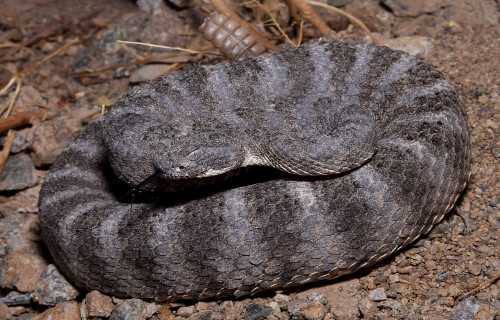

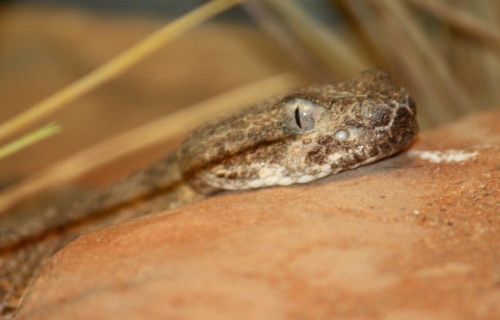
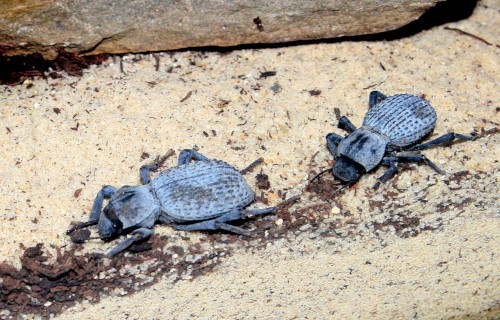
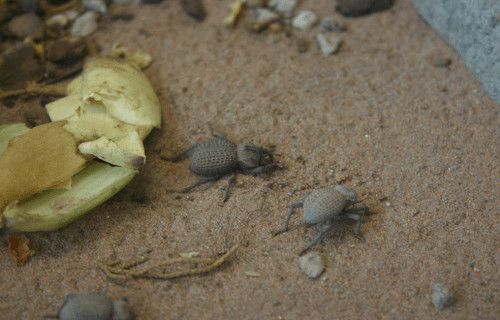
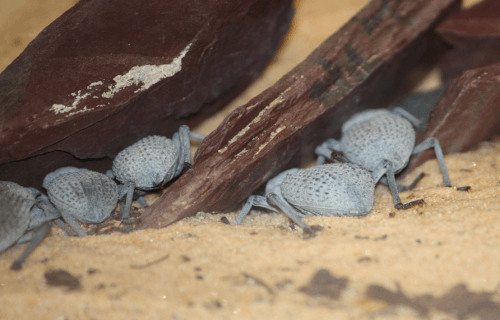
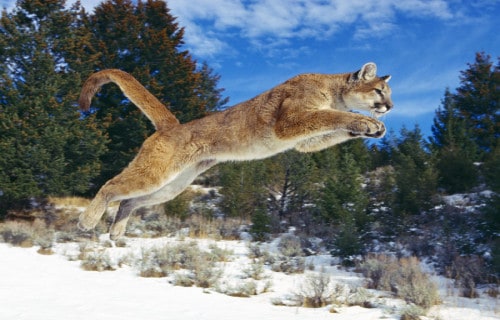

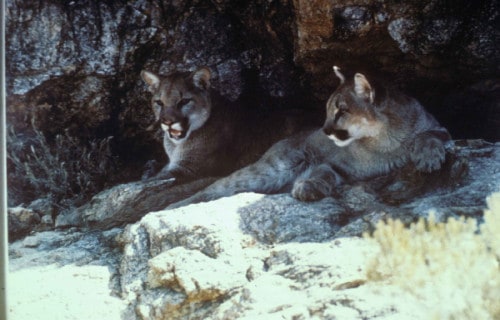
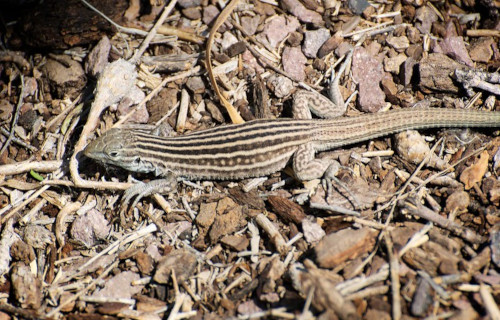
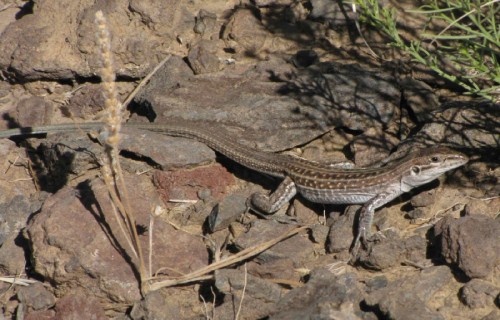
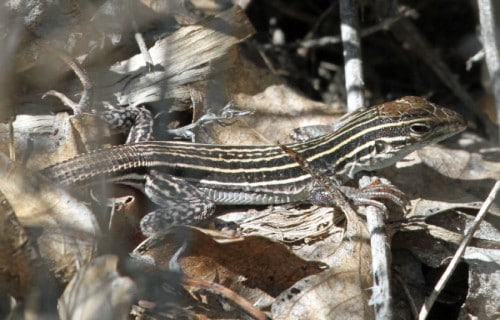


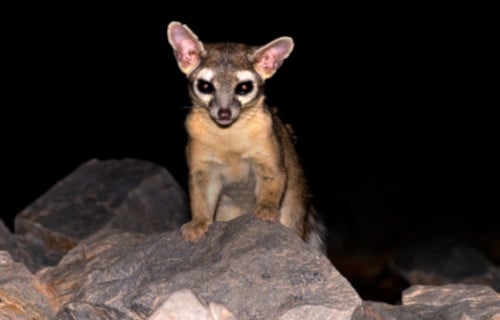
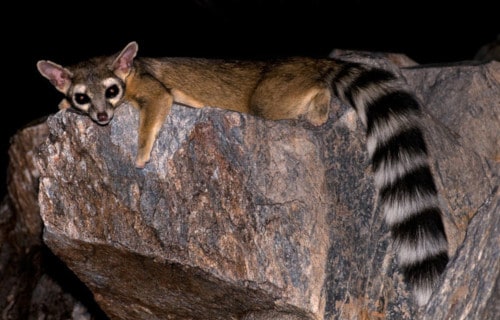
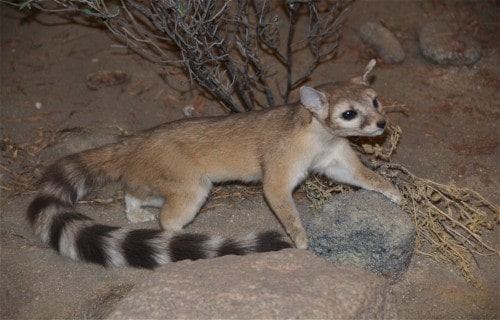
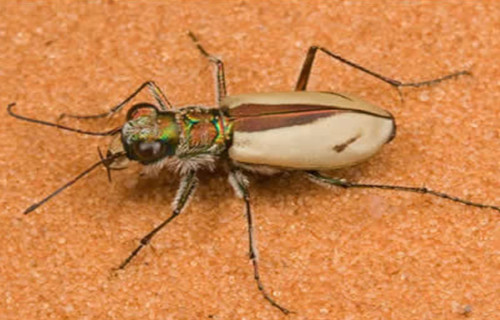
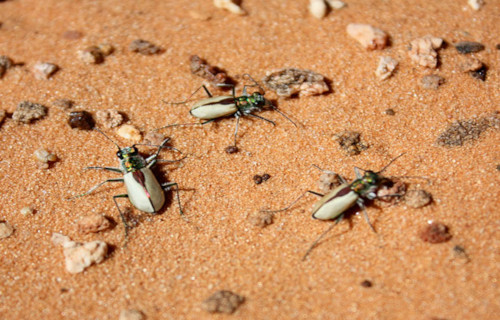










Leave a Reply